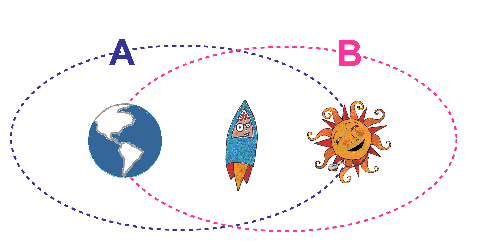|
We’re looking at the question, "why are the days getting longer?"
Remember! This is a reprint of an article that originally appeared in the LA Times on June 10, 1999. That means the days were getting longer as summer approached. Now summer is over and winter is approaching. Have you noticed how the length of day has been changing?
So why on Earth does the length of the day change? Last week we saw
that there are two main models to explain both the change in day length
and the change in seasons. One model is geocentric (Earth-centered),
the other is heliocentric (Sun-centered) and each assumes that the Earth
rotates on its axis every 24 hours.
I asked you to tell me how you would choose between these two
models. I was very pleased that Justin Snyder, who sent in the original
question, wrote to me suggesting that the clearest way to tell is to take
a spacecraft and go look.

We might
maneuver our ship to a point between the Sun and the Earth, carefully staying
in the same position. We will observe one of the objects moving around
the other one. If the Sun is moving, it would take path A around
the Earth. But, if the Earth is moving around the Sun, it will take
path B.
Suppose our spaceship was in for repairs. Can we find evidence
for one model over another just by using ground-based observation?
I asked this question of Glenn Miller, my astronomer friend at the Griffith
Observatory. He said that the first good heliocentric proof had to
await the invention of the telescope. In 1610, Galileo observed that the
planet Venus showed crescent phases (due to reflected light). He
realized that this could only happen if Venus orbited the Sun and not the
Earth.
Another friend, Professor Geoff Blake, also mentioned
the phases of Venus. He suggested that we make a heliocentric model
using a light bulb as the Sun and a ping pong ball for Venus. He
reminded us to describe what we see when the ball is held out while walking
around the light bulb in a darkened room. We could then compare this
data with observations of the actual planet, which we can take (over a
full year) with a small telescope or very good binoculars. How well
does this model match what we see in the real sky?
Now that we have examined why the days are getting longer, it's time
for vacation! During the summer, stop by and visit me at Whyville,
where there will be many new games, buildings, and activities. I'll
be back here again with new questions and new experiments in the fall!
|